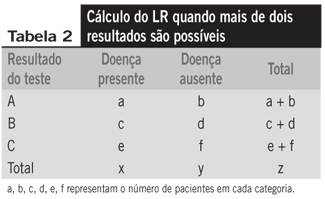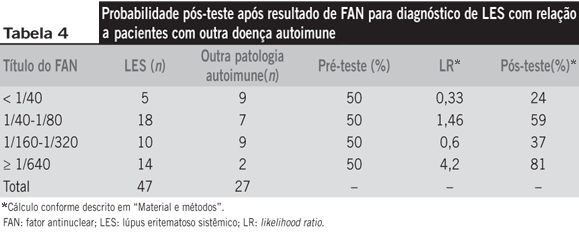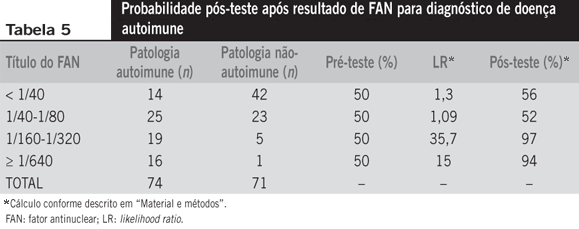BACKGROUND: The magnitude of variation in pre-test probability of a certain disease to a new post-test probability may be determined through likelihood ratio (LR), which reflects the clinical value of the result obtained in the procedure. OBJECTIVES: To verify the clinical impact of autoantibody screening on the diagnosis of Systemic Lupus Erythematosus (SLE) and other autoimmune diseases through LR measurement when HEp-2 cells are used for screening or investigation into anti-Ds-DNA antibody, showing the importance of parameters such as sensitivity and specificity. MATERIAL AND METHOD: Autoantibodies were studied by indirect immunofluorescence using HEp-2 cells and Crithidia luciliae anti-DNA test in serum samples collected from 47 individuals diagnosed with SLE, 27 with other autoimmune diseases and 71 with other pathologies. RESULTS: The presence of reactivity > 1/160 in HEp-2 cells showed positive LR with significant impact on post-test probability even in the absence of complementary investigation. In serum samples with reactivity < 1/160, anti-dsDNA screening has great relevance to the diagnosis of SLE with a great impact on post-test probability. DISCUSSION: As to sensibility and specificity of FAN test for results grouped into different intervals, it was confirmed that results with low titer do not change post test probability of disease occurrence. Complementary tests with high specificity have major clinical value. Both the investigation of parameters such as sensibility /specificity and likelihood ratio of diagnostic tests have crucial importance in efficient clinical evaluation.
Autoantibodies; likelihood ratio; SLE







